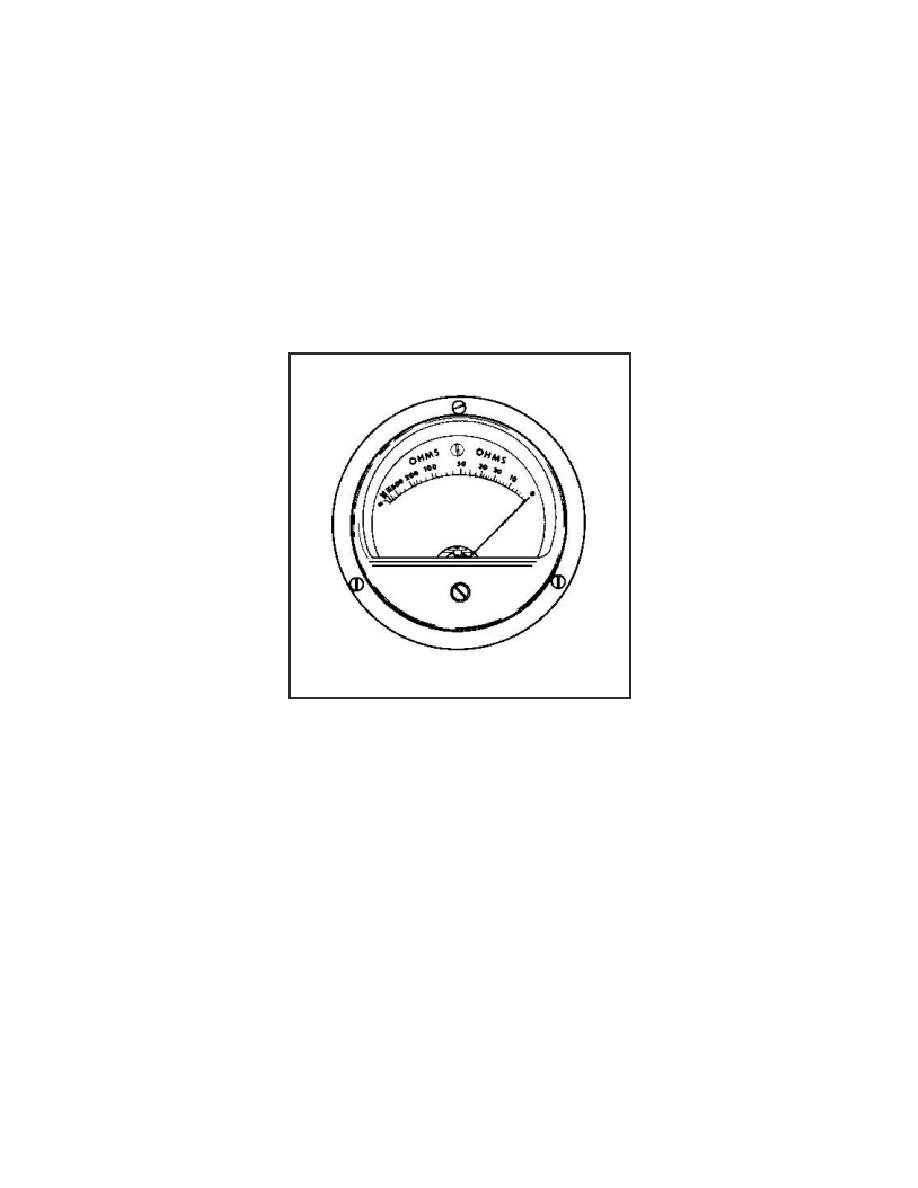
Lesson 3/Learning Event 1
Many things can happen in the electrical circuit that will change the amount of resistance in the
circuit. Rust or corrosion where wires are joined together will cause an increase in resistance. If
the wires are not tightly joined together, there will be an increase in resistance. Wires that have
been partially cut are another cause of high resistance. Whatever the cause, when the resistance in
a circuit is too high, the load unit in the circuit (such as a horn, radio, headlight, or starter) will not
work right--if it works at all.
The ohmmeter may be a separate meter, but more often, it is a part of a combination-type of meter
known as a multimeter. Combination meters are sometimes called volt-ohm-amp meters. These
meters vary in construction depending on the manufacturer. Let us find out what a simple
ohmmeter looks like and how it is used.
FIGURE 23. OHMS METER.
Most simple ohmmeters have one scale. The scale is calibrated or has numbers from zero to
infinity. The symbol for infinity looks like a figure 8 lying on its side (∞). Infinity means more
than the meter will measure. You should notice in Figure 23 that the dial scale goes from 0 to 500
and then to 1M, 2M, and infinity. 1M means 1,000 ohms, and 2M means 2,000 ohms.
74




 Previous Page
Previous Page
